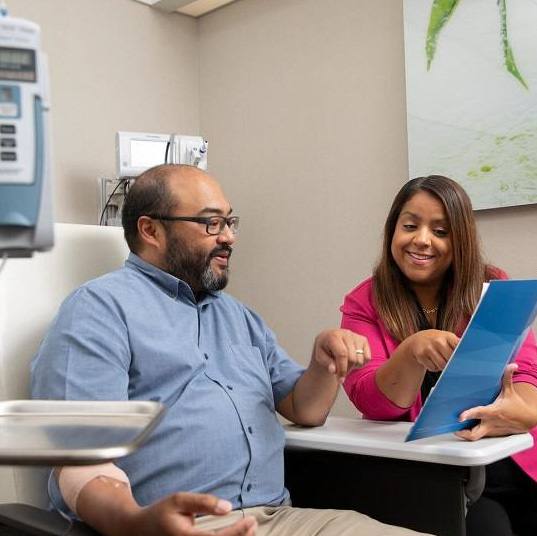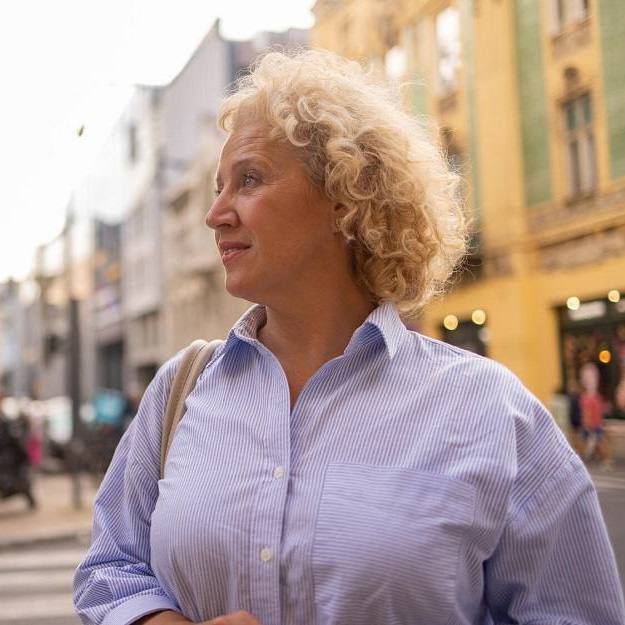-
Cancer
Cancer to COVID-19: Experimental treatment pivots in record time
Experimental Treatment Pivots in Record Time
At the beginning of 2020, everyone in research and medicine who could pivot to focus on COVID-19 did. Scientists and physicians hauled out findings from previous epidemics. In papers and personal correspondence, they shared descriptions of the damage wrought by SARS-CoV-2. They started running potential drugs through their paces.
"When you have a completely new infection, and it's of epidemic and pandemic proportion, there is a lot of scrambling to figure out how to deal with it," says Zelalem Temesgen, M.D., a Mayo Clinic infectious diseases specialist.
At Mayo Clinic, it was a sort of controlled scramble. Cross-discipline relationships and a culture of collaboration are already part of the institution's fabric and that saved time. Years in one case. With a united science and medical infrastructure, Mayo Clinic researchers raced through the scientific steps to repurpose a cancer therapy into a clinical trial for COVID-19 treatment in less than a year.
Cancer to COVID-19

Saad Kenderian, M.B., Ch.B., a Mayo Clinic cancer researcher, studies a type of cancer therapy called chimeric antigen receptor-T cell therapy, or CAR-T cell therapy. It was hailed as a breakthrough by the Food and Drug Administration (FDA) when the agency approved it in 2017. But the treatment can be risky. CAR-T cell therapy aims to generate an immune response to cancer that slipped past the immune system. In some cases, that immune response can be extreme.
"We call it a CAR-T cytokine storm or cytokine release syndrome," explains Dr. Kenderian.
The syndrome is prompted by a tidal wave of molecules, called cytokines, released by the T cells to organize an immune response. Up to half of all CAR-T cell therapy patients experience a cytokine storm that can lead to organ damage and even death in some cases. And this massive response appears to be fueled by one prevailing wind.
"We identified a cytokine called GM-CSF or granulocyte monocyte colony-stimulating factor that seems to stimulate the immune system and drive this cytokine storm after CAR-T," says Dr. Kenderian.
In a 2019 paper in Blood, Dr. Kenderian and his team showed that blocking GM-CSF in mice with an experimental drug called lenzilumab prevented the cytokine storm. That work led to a collaboration with a pharmaceutical company focused on CAR-T cell therapy. Together, they took their GM-CSF concept to a multicenter clinical trial in early 2020.
But then the pandemic started.
Literature Lightbulb

As papers on the new virus began pouring out in early 2020, Dr. Kenderian saw one that linked a cytokine storm in COVID-19 patients with GM-CSF. Since they already had the clinical-grade lenzilumab to block GM-CSF in a CAR-T cell therapy trial, Dr. Kenderian thought they should give it a try. He met with Dr. Temesgen and Andrew Badley, M.D., another Mayo Clinic infectious diseases specialist, to discuss the protocol.
Dr. Badley is the chair of the COVID-19 Task force, which coordinates and prioritizes COVID related research at Mayo Clinic. The concept of using Lenzilumab for COVID was reviewed by the task force members, and the study was approved to proceed. Dr. Temesgen already was seeing COVID-19 patients, so when the protocol was approved, he was ready. Mayo clinical science infrastructure — from research nurses to the Institutional Review Board that protects human study participants and the links to the FDA — had been prepped to keep the study rolling.

"We used the compassionate use pathway to provide lenzilumab to patients hospitalized with COVID-19," says Dr. Temesgen. Along with Dr. Badley, Dr Temesgen is a member of the COVID Treatment Review Team at Mayo Clinic in Rochester, Minnesota. This team met twice per day every day to decide on treatment for each COVID-19 patient. "We approached patients hospitalized with COVID-19, informed them of the possibility of having this medication, and obtained their consent to enroll them into the compassionate use program."
Then they obtained permission to use lenzilumab from the Institutional Review Board and the FDA separately for each patient.
"In this way, we provided lenzilumab for 12 consecutive patients between March 13 and June 18 (2020)," says Dr. Temesgen. "We compared the impact of lenzilumab in these patients with the outcome of a group of patients similar to patients treated with lenzilumab in age and gender who were also hospitalized with COVID-19 in our hospitals during the same time period."
Just a month after the small study started, the findings, though early, were enough for the company providing lenzilumab. They funded a larger clinical trial that began enrolling participants on May 5, 2020. That 520-participant study completed enrollment on January 29, 2021, and the company released an overview of the findings on March 29, 2021.

From Discovery to Translation to Hope
Dr. Kenderian says the highlight for him is knowing they took an idea through to a full clinical trial within a year. Shrinking review times from months to days helped, as did the intense focus and prioritization of COVID-19 efforts within Mayo and globally.
"We've accomplished in this year what normally would take seven years, and while it's driven by a pandemic and the focus is all on the pandemic, I think we should learn from this experience," says Dr. Kenderian.
It is the case, inevitably, says Dr. Temesgen, that this incredible focus must wane. After all, a host of other serious and complex medical conditions remain to be treated. But as the pandemic ebbs and flows and attentions shift, he hopes the medical research community can embrace some lessons.
"The pandemic certainly has shown us that there are better ways of doing things," says Dr. Temesgen. "There are ways that we could streamline what we do, and there are ways of harnessing technology to support care and research. I think we have learned a lot."
But the one constant before and after COVID-19 is the dedication of those in medical care and research.
"What we did in COVID," says Dr. Badley, "serves as a model of how research should strive to achieve in other domains. In these treatment review teams, we had research study personnel, clinical staff who were often the critical care staff, all on the phone, all at the same time, all talking about the same patient. And the integration and desire to do what was best for patients, and the shared experience, the shared learning, and the sharing of science every day was remarkable."
— Sara Tiner, June 2021
Read more about that effort in "The team that kept translational science on the fast track to curb COVID-19 pneumonia."
Read more about monoclonal antibodies in, "Monoclonal Antibodies: Update on this COVID-19 Experimental Therapy."







